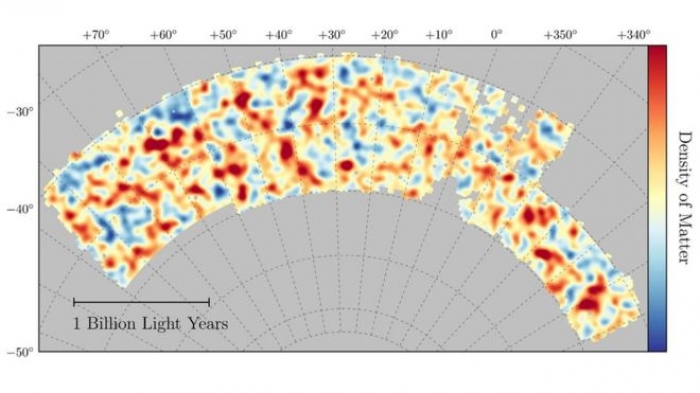The map will help scientists understand what dark matter is made from and learn more about another mysterious phenomenon called dark energy.
The results have been released by the international Dark Energy Consortium (DES).
According to Professor Ofer Lahav of University College London (UCL), and chair of the DES Advisory Board, the map would provide new insights into how the Universe operates.
"Dark energy and dark matter represent probably one of the biggest mysteries in the world of science. And this has generated a lot of interest across the whole of science because it is a major shakeup. And actually we still don't know what it is," he said.
Scientists have suspected that there is more material in the Universe than we can observe for more than 80 years.
The movement of stars and galaxies indicate that the Universe is also made up of invisible particles called dark matter.

Observations were taken with the Victor M Blanco telescope in Chile
In 1998, two teams of astronomers discovered the expansion of the Universe was accelerating, rather than slowing down, as the theory at the time suggested. Physicists speculated that the acceleration was caused by something they named dark energy.
Since then, observations have indicated that dark energy and dark matter together account for 96% of the Universe. The challenge has been to find ways of studying these invisible phenomena in detail.
"We cannot just say we don't know what it is, we have to make an effort to see what it is," according to Prof Lahav.
The Dark Energy Survey is the most ambitious effort to date. It began in 2004 and involves 400 scientists from 26 institutions in seven countries.
The survey involves taking pictures of 26 million galaxies across a large expanse of the sky using the Blanco telescope in Chile. To do this, the research team had to build one of the most sensitive cameras ever built. The 570-megapixel camera is capable of detecting light from galaxies that are eight billion light-years away.
By studying the way in which the light was distorted by the intervening dark matter, researchers were able to calculate its distribution. And by studying the way in which the distribution changes over time they can calculate the way in which dark energy acts on it.
The team was also able to infer the amounts of dark energy and dark matter from the density and locations of galaxies.
The results show support for previous studies that indicate the Universe is made up of 4% ordinary matter, 26% dark matter and 70% dark energy.
The hope is that a detailed study of the map will give clues about what dark matter and dark energy might be and so lead to a more complete theory of physics.
The data released today draws from just one year of observations. The researchers plan to collect data for four more years over an even larger area of the sky. Prof Lahav says that there is much more to come.
He explained: "Once we have the full survey, 300 million galaxies and a thousand supernovae, we may be providing input for a new Einstein to tell us what does it all mean - why is the Universe made the way it is?"
More about: #Universe
















































